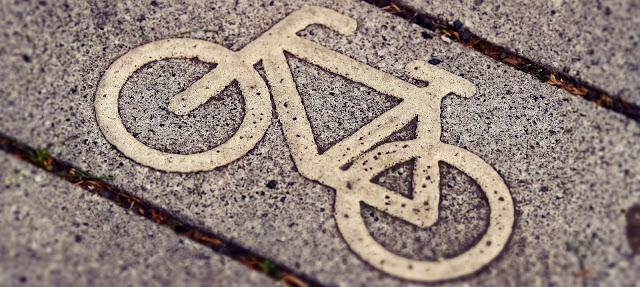Riding through Spain tends to be a very pleasurable experience due to the excellent condition of its roads, clearly marked signage, and generally considerate motorists. The responsability to maintain Spain's roadways is shared between its 17 autonomous communities, and in general is handled in strict accordance with motorway legislation.
This being said, and although we know that many cycling rules are universal, we thought it would be a good idea to go over some of the possible differences you might encounter.
GENERAL RULES & CONSIDERATIONS
- Since in Spain people drive on the right side of the road, for those not accustomed you should be especially vigilant at roundabouts and junctions.
- Likewise, you should also know that the brakes are set up the other way around, so the left hand is front brake and right hand is back break.
- The use of a helmet is compulsory on roads between towns, but not when cycling within towns and cities.
- Officially, it is prohibited to cycle while using earpieces or headphones which reproduce sound (this includes MP3 players, radios and mobile phones).
- Careful! Just because you’re not using a motorized vehicle doesn’t mean you can cycle with alcohol in your system! The maximum blood level allowed is 0.5 g/l. The local police are authorised to give cyclists, just like motorists, alcohol tests on the spot.
RULES WHEN CYCLING
In cities, you are obliged to cycle as close as possible to the sidewalk without
actually going up on it. Remember that sidewalks are for pedestrians, many cyclists break this rule and its easy for cyclists as a whole to get a bad reputation as a result.
If you are travelling in a group, you are permitted to cycle maximum two abreast; however, for sections where there is little visibility or if there is high traffic, you are obliged for safety to ride single-file. Be courteous! If you are riding with a buddy and there's a long line of motor traffic behind you, it makes sense to ride single file and let people pass :) In these cases, motorists are obliged to keep a distance of at least 1.5 metres when passing.
Bikes have
the right-of-way versus motor vehicles when a motor vehicle
is going to turn at an intersection or roundabout and the cyclist is close by or
is already starting to cross himself / herself.
 Similarly,
bikes need to yield to pedestrian traffic when a bicycle is going to turn at an intersection or
roundabout and the pedestrian is close by or is already starting to cross
himself / herself (even if there is no clearly indicated pedestrian crossing
for these situations)
Similarly,
bikes need to yield to pedestrian traffic when a bicycle is going to turn at an intersection or
roundabout and the pedestrian is close by or is already starting to cross
himself / herself (even if there is no clearly indicated pedestrian crossing
for these situations)
On regular intercity roads cyclists need to remain on the shoulder / hard shoulder area of the road if this area is reasonably wide. If there does not exist an adequate shoulder, you will need to cycle as close as possible to the right hand side of the road.
Keep in mind that cycling on highways ("autopistas") is generally ill-advised and in many cases there is signage which forbids it.
SIGNALS
Keep in mind that cycling on highways ("autopistas") is generally ill-advised and in many cases there is signage which forbids it.
SIGNALS
In Spain,
the order of priority from highest to least when it comes to road signals is
the following: 1. Hand signals from
policemen or authority figures, 2. Stoplights and illuminated signs, 3. All
other vertical signs, 4. Horizontal painted indications on asphalt.
If there is
a policeman organizing traffic at an intersection, they will have an arm lifted
vertically or horizontally against the direction of traffic that cannot
pass.
As with
motor vehicles, you must stop at intersections with stoplights that are red or
solid yellow (except when the cyclist cannot safely stop in time before the
designated stop line). Also, cyclists
must stop before any yield signs or obligatory stop (or equivalent) signs.
If you need
to stop or brake suddenly, you must indicate this with short and rapid up and
down movements with your free arm.
The universal gestures for turning right or left are the same here in Spain, but as a refresher for those fairly new to cycling in general take a look at the accompanying images.
 |
| Gesture for turning Right |
 |
| Gesture for turning Left |
The universal gestures for turning right or left are the same here in Spain, but as a refresher for those fairly new to cycling in general take a look at the accompanying images.
Finally, in Spain there are a number of T-intersections where the motorists or cyclists need to use a small half-roundabout for safety purposes rather than turn left directly. See the accompanying diagram here for a better idea on how this works.
Again, motorists in Spain are pretty considerate, so as a golden rule if you are they will be too. If you understand some Spanish and want to see more in-depth information regarding regulations for cycling, see here.
.....and that's it! Remember to keep hydrated while cycling and keep using those sunglasses!
.....and that's it! Remember to keep hydrated while cycling and keep using those sunglasses!














